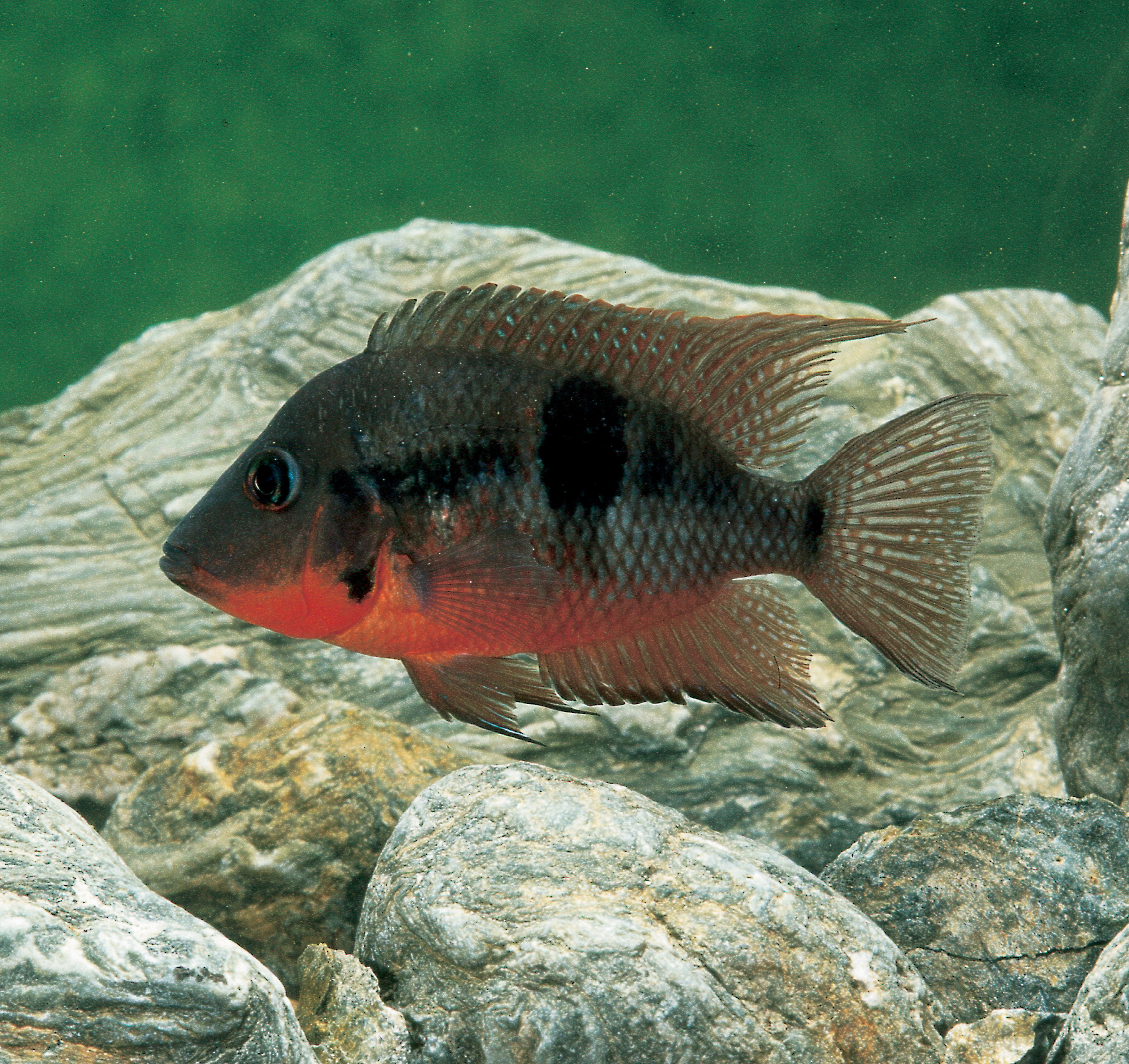
Many Central American Cichlids are large, aggressive showy fish ideal for the larger aquarium. Many species exceed 30cm (12") in length when fully grown, so are comparable to fish such as Oscars in the size stakes. The coloration and behaviour of Central American Cichlids, combined with their willingness to breed readily makes them attractive fish for the species tank.
Can they be kept in a community tank?
A few species, such as the Firemouth (Thorichthys meeki), and its rarer and more beautiful relatives Thorichthys ellioti, Thorichthys affinis and Thorichthys aureum are placid enough to be housed in a community tank containing larger fishes. The majority of species, however, fare better when housed with other cichlids, large catfishes, or other more solidly-built species. Many species will happily co-exist with community fishes whilst young, but when mature, or when spawning they can quickly become rather aggressive.
How are the other species best kept?
Central American Cichlids are best kept in a tank containing other similar sized fishes. They have a tendency to dig, and may uproot, or eat, plants. Tanks are best furnished with bogwood and piles of large, smooth rocks, which may later act as spawning sites. Larger species need large tanks, often over 120cm (4 ft.) in length to allow them to reach full size. They are large and powerful fish, and so heaters will need protecting within heater guards to prevent them from becoming damaged.
Are they easy to breed?
Most Central American Cichlids are quite easy to breed, and the fishes form true pair bonds. In general a nest site is excavated in the gravel and eggs are laid on a rock nearby, fry may be herded around the tank by the parents, and cared for over several weeks. Smaller species produce around 300 eggs, but larger species can lay over 1000.

